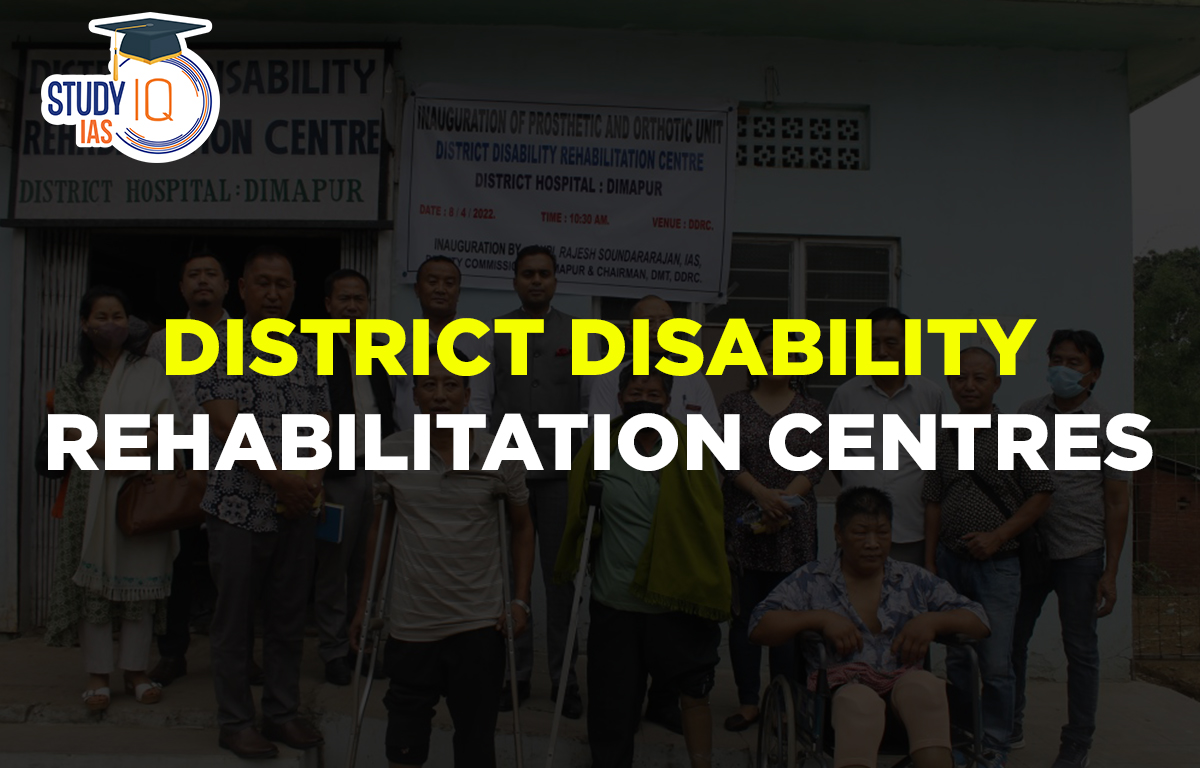Table of Contents
More on the News
- Casual Approach of Government: About 55-60 District Disability Rehabilitation Centres (DDRC) have been made functional so far out of the targeted 269 in designated districts.
- However, according to government, 269 DDRCs had been “set up” across the country.
- As per Rights of Persons with Disabilities (RPwD) Act, 2016 all type of disabilities will be covered under DDRCs by including different type of professionals.
- Timely Implementation of DDRC: Committee had expected that the revised guidelines for the scheme would correct DDRC’s “inherent deficiencies” and clear the path for setting up the targeted number of DDRCs.
- Ministry of Social Justice and Empowerment had told the panel that it had increased the number of disabilities covered from seven to 21 in 2018 and that the revised guidelines for setting up the rest of the DDRCs would be implemented in 2022-23, making it preferable for the centres to be located near district hospitals and intervention centres.
- However, Committee has strong doubt about the early implementation of the revised guidelines as promised by the government.
- Government’s Role: Proper roadmap with timelines for the execution of the work needed to establish the DDRCs in every district of the country as targeted.
District Disability Rehabilitation Centres (DDRC)
- They are spread across the country for providing effective rehabilitation services to the persons with disabilities.
- These centres are run jointly by District Management Team headed by DM/Collector and a reputed NGO (Usually Indian Red Cross Society).
Model DDRCs
- To improve DDRC services, the Department of Empowerment of Persons With Disability has conceptualized the Model DDRC model.
- Model DDRCs will act as milestone in providing quality rehabilitation services to PwDs while setting an example for newer DDRCs to come in future.
- Services Available: Hearing aids test lab, speech therapy room, visual therapy room, psychologist room, physiotherapist room, gait practice parallel bar and tele-medicine.
United Nations Convention on the Rights of Persons with Disabilities (UNCRPD), 2006
- It imparted empowerment to Persons with Disabilities across the globe to demand their rights and make State, private and civil society agencies accountable for enjoying their rights.
- India is one of the few first countries which ratified the Convention.
Incheon Strategy
- Aim: To make the right real for Persons with Disabilities in Asia and Pacific sets out the following 10 goals:-
- Reduce Poverty and enhance work and employment prospects;
- Promote participation in political processes and in decision making;
- Enhance access to the physical environment, public transportation, knowledge, information and communication;
- Strengthen social protection;
- Expand early intervention and education of children with disabilities;
- Ensure gender equality and women’s empowerment;
- Ensure disability-inclusive disaster risk reduction and management;
- Improve the reliability and comparability of disability data;
- Accelerate the ratification and implementation of the Convention on the Rights of Persons with Disabilities and harmonization of National Legislation with the Convention.
- Advance sub-regional, regional and inter-regional co-operation.


 Fiscal Slippage, Causes and Implications
Fiscal Slippage, Causes and Implications
 Serious Fraud Investigation Office (SFIO...
Serious Fraud Investigation Office (SFIO...
 Article 142 of Indian Constitution, Sign...
Article 142 of Indian Constitution, Sign...





















